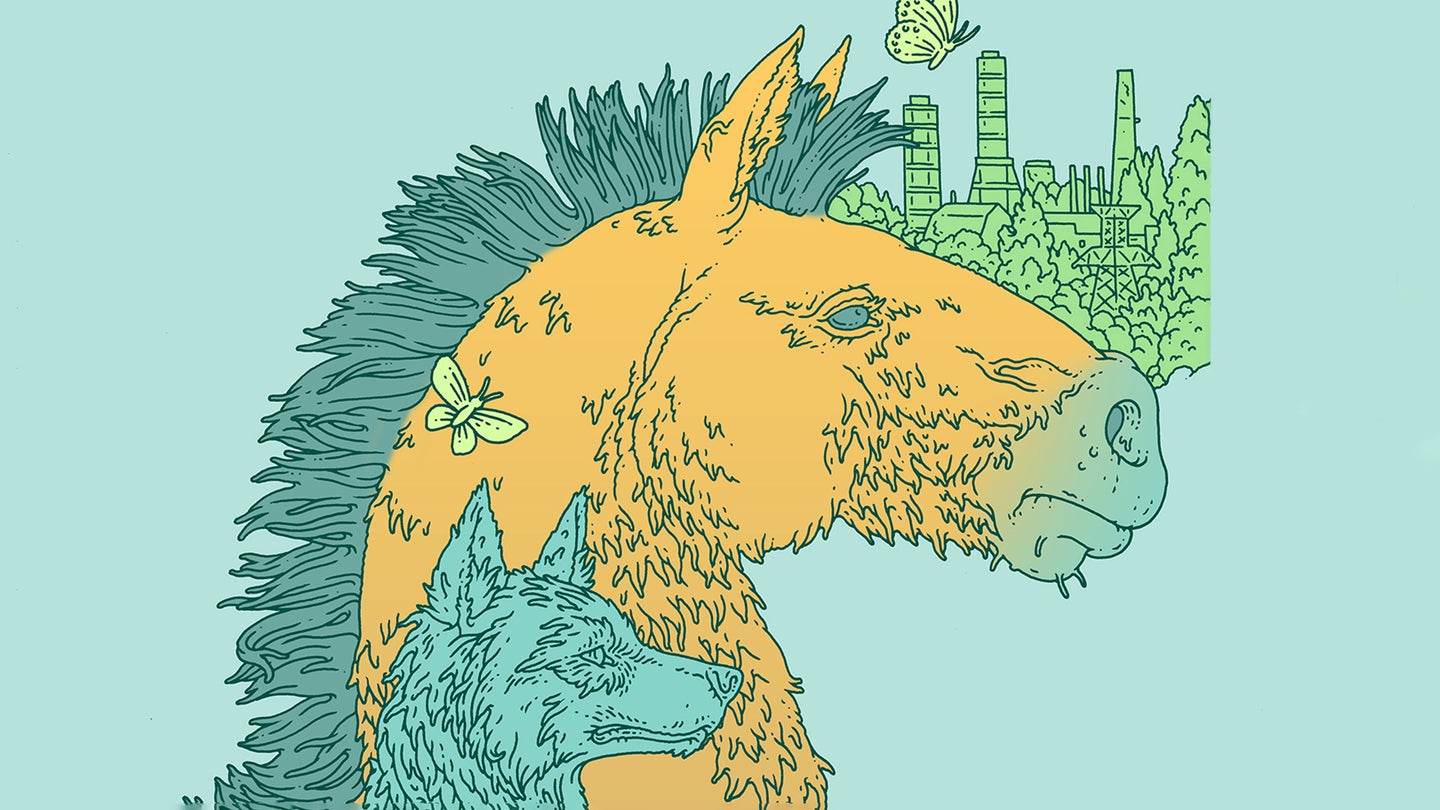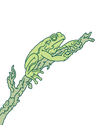
How nature has taken over Chernobyl
Since humans abandoned the area, nature has reclaimed the Chernobyl Exclusion Zone.
PEOPLE TEND TO THINK of the Chernobyl Exclusion Zone as a nuclear wasteland. But 35 years after a reactor meltdown drove 350,000 people from the region (an area half the size of Delaware), flora and fauna thrive. Some believe the region’s biodiversity has actually increased with no one around.
As a coniferous forest reclaims the city of Pripyat in Ukraine, hundreds of species, from butterflies to bison, roam crumbling streets and abandoned buildings. Here’s what four of them tell us about how nature adapts once we’re gone.
Wild horses

The Przewalski’s horse lived only in captivity until researchers turned 36 loose in the territory between 1998 and 2004. The herd has more than doubled and shows no sign of mutation, which could mean the site is a good place to introduce other critically endangered species.
Predators at their apex

Wolves are seven times more abundant in the area than in similar woodlands. The canids fare well because they face little competition for abundant prey and few dangers to their young. That leads scientists to suspect human presence poses a greater threat to wildlife than an atomic accident.
Enigmatic amphibians

Frogs within the region are darker than those outside it, which may indicate the croakers are developing defenses against radiation. Understanding these evolutionary quirks can help researchers better predict the impacts of other kinds of environmental upheaval, like climate change.
Toothy time travelers

The Pripyat River basin was marshy until industrialization intruded. Now a booming beaver population is restoring the ecosystem by felling trees and damming canals. The land eventually will return to its original state, underscoring the planet’s resiliency in the face of Homo sapiens.
This story originally ran in the Spring 2021 Calm issue of PopSci. Read more PopSci+ stories.